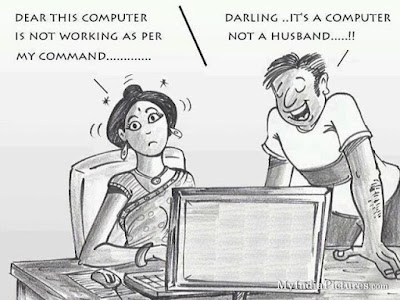"Being a woman is a terribly difficult task, since it consists primarily in dealing with men". ........ Joseph Conrad
If we go back on the history of most of the known civilizations world over, it is clearly observable that the farther we go into antiquity, the more unsatisfactory is the position of women. The Hindu civilization is unique insofar as we find here in the Indian subcontinent a marked exception. The position of Indian women was quite satisfactory.
 |
| www.sketchite.com |
 |
| www.pinterest.com |
to take important decisions of life. They were treated as “Ardhanginis”. During the early Vedic period (300 BC to 600 BC) in many aspects of life, women were on par with men and enjoyed equal status and had formal education as suggested by ancient Indian grammarians such as Patanjali and Katyayana. The Atharvaveda stresses the importance of women's education and its bearing on successful married life.
In the Rigveda, it is mentioned, that women were given in marriage after their puberty and were free to select their own life-partners without any compulsion or so. No imposition of marriage. Marriage, a holy sacrament, was considered a social necessity and motherhood was an important aim of the Indian marriage. The ancient system of "Swayamvara"- selection of a life's partner among many is mentioned in holy scripts and also in many epics. It was prevalent among Kashatriya rulers
 |
| ancient Indian woman The Metrognom |
A man could perform his Vedic rites only with his wife by his side so that he could propitiate his pithroos (forefathers) by conducting Thithi with his consort. Down to the Mauryan rulers, the couple were expected to offer oblation to the household fire unaided by the husband.
Surprisingly, Child marriage was unheard of in those days. Not only did the well-read women impart their knowledge to the youngsters but also proved their depth of knowledge in philosophy and religion. There were several women sages and seers, notably Gargi and Maitreyi , according to Scriptures such as the Rig Veda and Upanishads. The women had a respectable place in the society. In Hindu society, man is only one half of an entity and both husband and wife had equal rights. A home without a wife was considered a forest, according to Scriptures. Divorce was not allowed and men had no rights to divorce their wives!
 |
| Gori act of Sat-- self-immolation by a widow.www.newindianexpress.com |
 |
| indiafacts.org |
However, women had limited rights in inheriting property. A spinster was entitled to one-fourth share of patrimony received by her brothers whereas married daughter had no share in her father’s property. The family property was under the control and management of the patriarch. As for wife living separately, she was entitled to 1/3rd of her husband’s wealth. Unfortunately a widow had no share of her husband's estate and the the society preferred her to lead life similar to that of an ascetic.Women’s participation in public meetings and debates, however, gradually declined in later Vedic period because in such gathering gambling and drinking were allowed.
During the Epic period the Indian women continued to enjoy an honorable position at home as revealed by the various episodes in the Ramayana and Mahabharata. There are references to the valor and wisdom of great women like Sabitri, Draupadi, Kaikeye, Sita, Rukmani, Satyabhama and others.
During the period of Dharmashastras and puranas, the status of women was not satisfactory as one could see gradual erosion of their status and equal rights. They were relegated to second class citizens. No access to education, no freedom and the society was dominated by men.
 |
| Purdah. www.outlookindia.com |
On the social side, child marriage (pre-puberty marriage) took roots. There was no room for either widow's remarriage or access to education. Slowly creeped-in was the scourge of Sati. So was the purdah system. As for males, polygamy was allowed and the wife had to put up with this injustice.
 |
| Modern Indian woman. Original Wavelength |
The women had to climb the social ladder with patience and caution. In the later centuries and after the arrival of the colonial rule, they had a flicker of hope and desperation to surge forward to prove their worth in the society.
Ref:
https://en.wikipedia.org/wiki/Women_in_India
http://www.yourarticlelibrary.com/women/status-of-women-in-ancient-india/47636/









